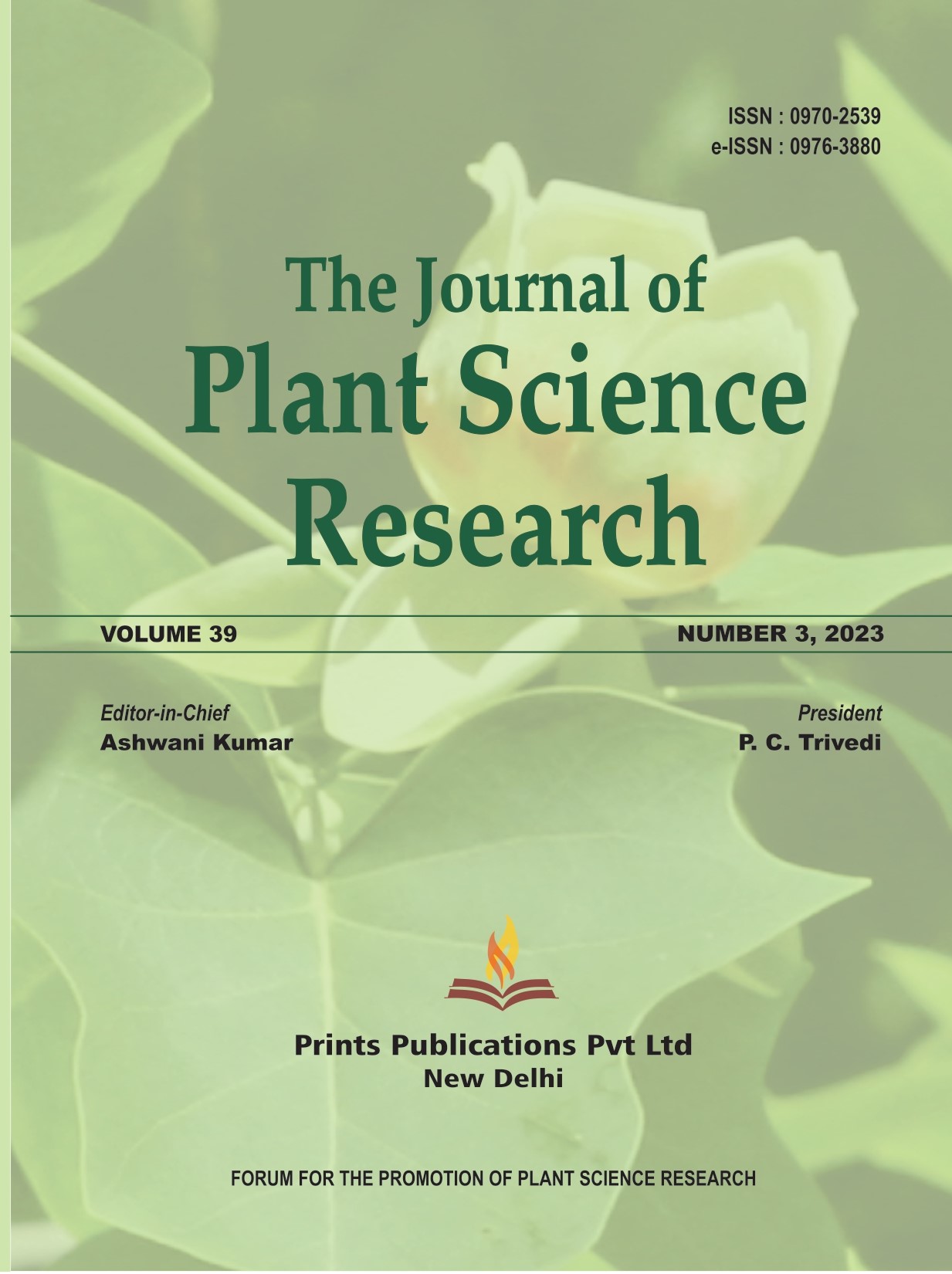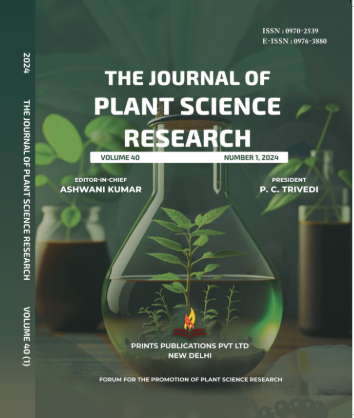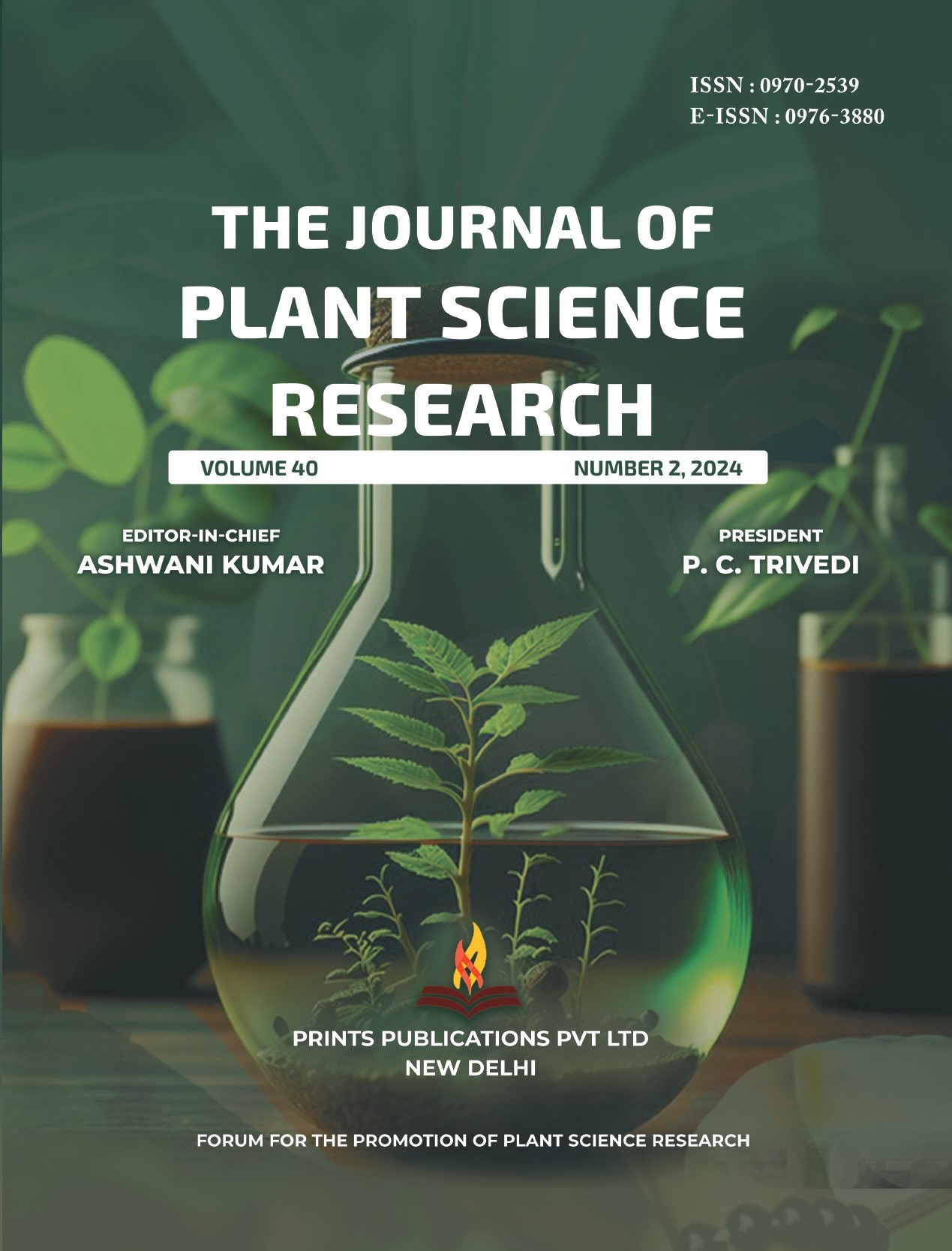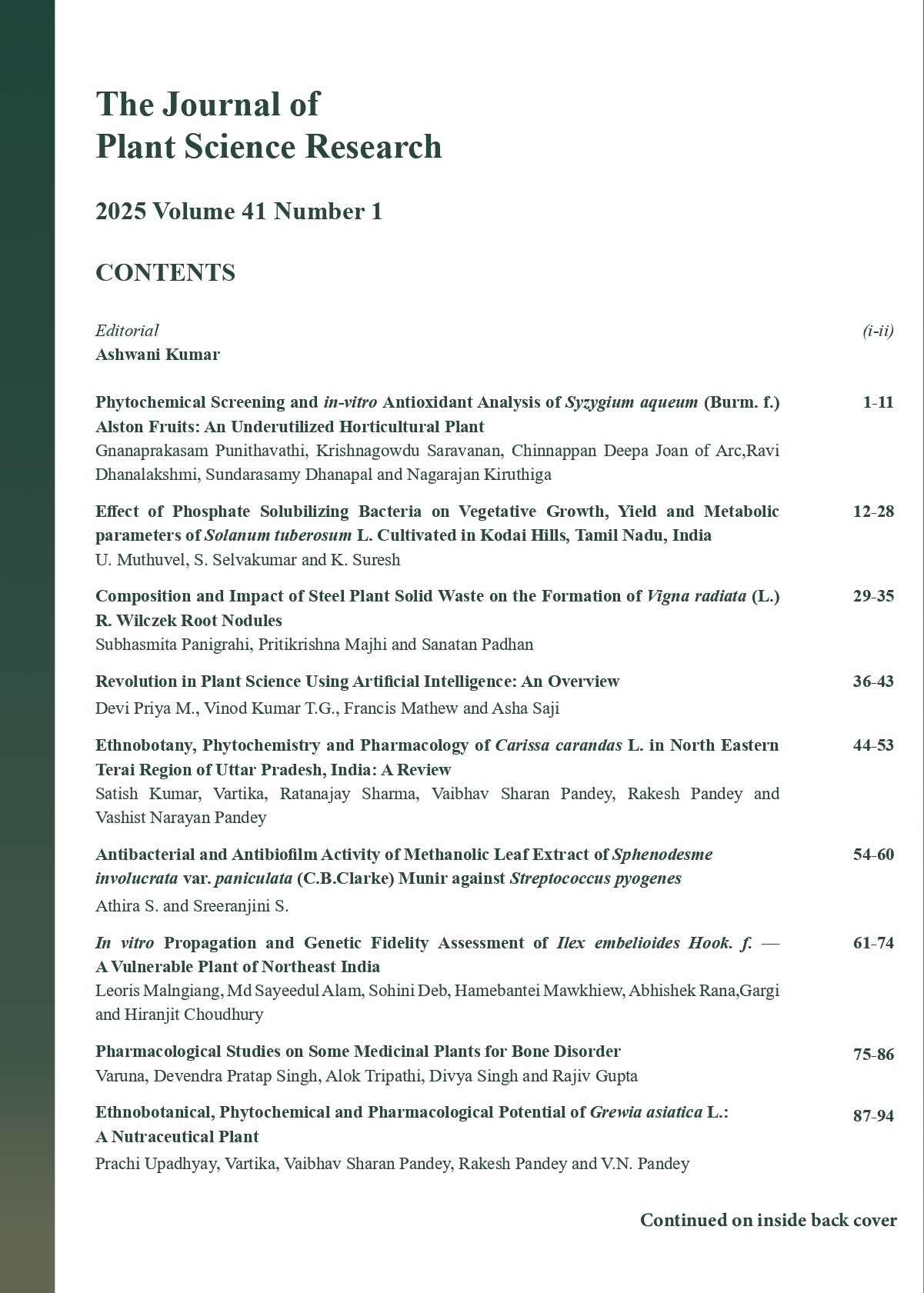The Journal of Plant Science Research - A UGC Care-Listed Journal
Published in Association with Forum For the Promotion of Plant Science Research
Current Volume: 41 (2025 )
ISSN: 0970-2539
e-ISSN: 0976-3880
Periodicity: Tri-annual
Month(s) of Publication: April, August & December
Subject: Botany
DOI: 10.32381/JPSR
Online Access is Free for Life Member
Nutritional Values and Antioxidant Activity of Wild and Cultivated Banana Pseudostems from Manipur, North Eastern India
By : Thokchom Sonia Devi, Padmaraj Gajurel, Sorokhaibam Sureshkumar Singh
Page No: 203-211
Abstract
Young and fresh banana pseudostems of (Musa sp.) locally known as “Laphu” (Manipuri) are sold in the local markets and consumed as a common vegetable in Manipur. Despite high economic value and consumption, the nutritional values of banana pseudostems have not been studied. The present study evaluated the nutritional values and antioxidant activity of four highly consumed banana pseudostems [MN13 (Meitei Hei), MN14 (Maring Hei), MN15 (Ningol Hei) and MN20 (Ching Laphu)] found in different parts of Manipur. Two of the cultivated banana pseudostems (MN13 and MN15) were identified as Musa acuminata, MN14 as Musa hybrid cultivar and MN20 as Musa balbisiana of the family Musaceae. The total sugar (0.99 %), reducing sugar (0.57 %), starch (39.22%) and amino acid (23.94 μg/mg) contents were recorded highest in MN14. Non-reducing sugar (0.57 %), crude protein (12.84 %), ash content (30.63%), total phenolic content (23.31 ug GAE/mg) and flavonoid (15μg RE/mg) were found highest in MN20. Among minerals, the highest values of N content was recorded in MN20 (2.05%), P in MN13 (400.78 mg/100g), K in MN14 (42.88 mg/100g) and Na (1.14 mg/100g) in MN15. The antioxidant properties of the pseudostems were found to be very low in all samples as compared to cow pea (31.56%), ascorbic acid (65.86%) and gallic acid (69.2%). The present study reveals that the two banana pseudostems, MN14 (Musa hybrid cultivar) and MN20 (Musa balbisiana) were found to possess the highest nutritional contents based on mineral and dietary values. Further, studies may lead to the development of a suitable management strategy for conservation and sustainable utilization of MN20 as an important vegetable in the future.
Authors :
Thokchom Sonia Devi and Padmaraj Gajurel : Department of Forestry, North Eastern Regional Institute of Science & Technology, Nirjuli, Arunachal Pradesh, India.
Sorokhaibam Sureshkumar Singh : Department of Botany, School of Life Sciences, Manipur University, Canchipur, Imphal, Manipur, India
DOI: https://doi.org/10.32381/JPSR.2023.39.02.21






